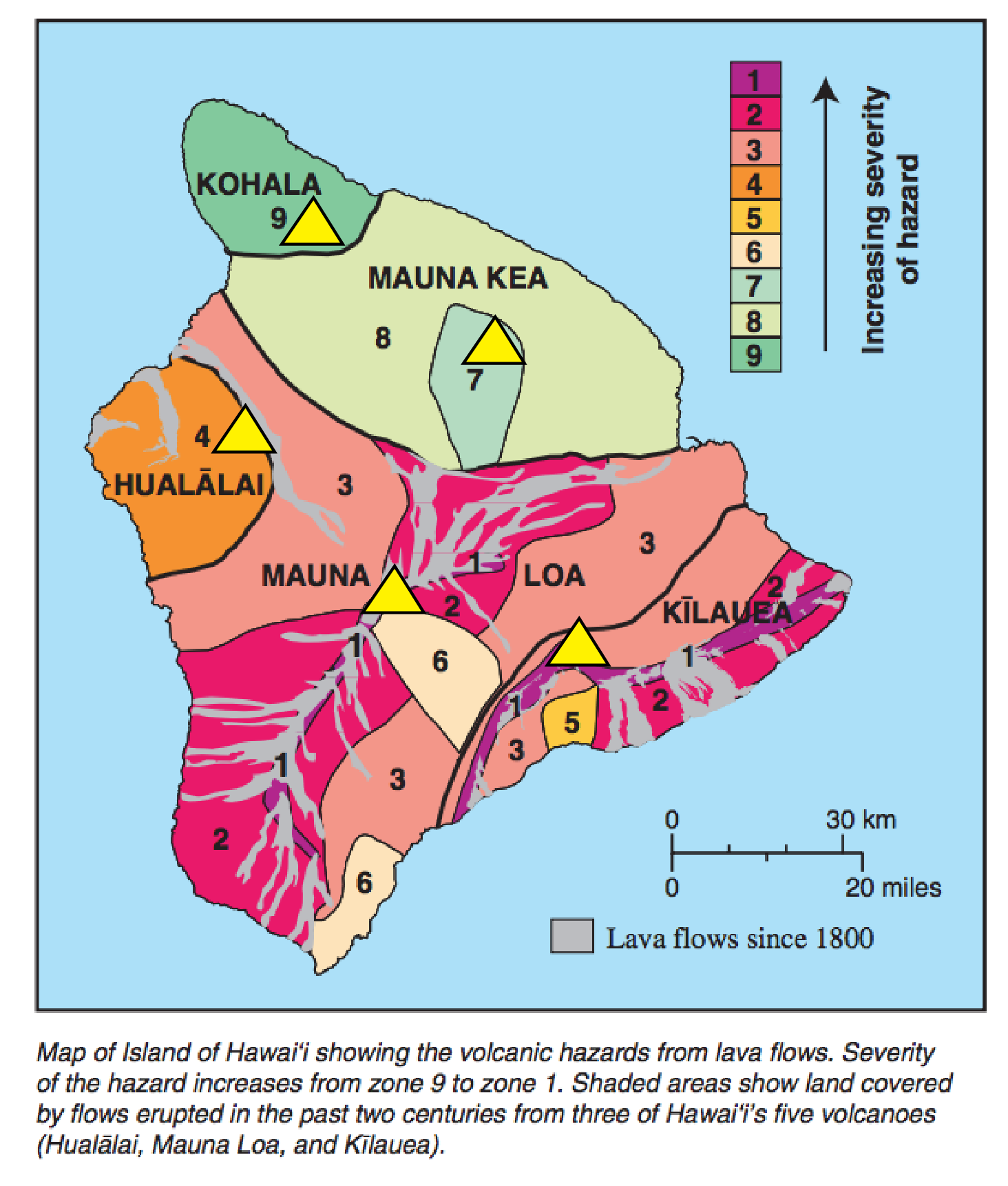Students take on the role of volcanologists working to keep the public safe on the island of Hawaiʻi. They begin by analyzing geologic data from the days leading up to the May 2018 eruption of Kīlauea. Students use the data to make predictions and recommendations about mitigating the effects of volcanic hazards on the island. Students will continue this process in the next lesson. They will also refer to this information as they create a Hazard Response Plan in the final lesson.
NOTE: This lesson requires some familiarity with basic terms and concepts related to volcanoes. If your class has limited prior knowledge of volcanoes, it is recommended that you complete Lesson 0 before doing this lesson.

How do scientists monitor volcanoes in order to predict hazards and keep the public safe?

If your class completed Lesson 0, remind them that they prepared for their role as volcanologists by exploring important concepts about volcanoes and classifying them into different categories.
If your class did not complete Lesson 0, ask students questions to engage their prior knowledge of volcanoes, such as:
Students might say:

How do scientists monitor volcanoes in order to predict hazards and keep the public safe?


| Our Observations | Our Analyses | Our Recommendations |
|---|---|---|
Earthquakes
|
The increase in earthquakes in the Kīlauea area might mean Kīlauea is about to erupt. |
|
Deformation
|
|
|
Sulfur dioxide
|
|
|
Keep the chart for review and reference in the following lessons.
